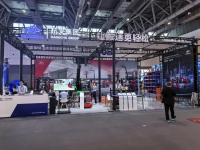The Freight Transport Association says that road pricing can only be acceptable to industry if the benefits it d...
The Freight Transport Association says that road pricing can only be acceptable to industry if the benefits it delivers in terms of reduced journey times and improved journey time reliability exceed the cost to operators.
The Association’s latest Quarterly Transport Activity Survey (QTAS) for July 2007 set out a possible scenario for operators whereby road pricing would deliver school holiday levels of traffic every day of the year. Some operators believed cost and efficiency savings were possible under such conditions, although the majority anticipated insufficient changes to make a noticeable difference to hgv operating costs or to warrant a restructuring of their existing vehicle routeing and deployment patterns. Key findings were:
More than 1 in 3 (40 per cent) of operators expected to reduce fuel usage (as a result of less time spent sitting in traffic jams). The average reported saving was 8 per cent on current usage. For a 7.5 tonne rigid this represents an annual saving of £750 per annum. (Source: FTA Manager’s Guide to Distribution Costs, April 2007).
1 in 4 operators would be able to reduce driver related costs (due to less overtime being needed).
1 in 7 operators would reduce the total vehicle kilometres carried out.
1 in 6 would be able to reduce the number of vehicles operated.
FTA Economics Analyst, Elizabeth Leroy said, ’Operators consistently report poorer and poorer reliability on the motorway and trunk road networks, and in urban areas. The Department for Transport’s latest figures for network reliability on the strategic road network show average vehicle delays have risen by 8.7 per cent since 2004/5 on the slowest 10 per cent of journeys. This compares to the Government target of delays getting no worse than they were in 2004/5. A similar picture is evident on urban roads, where average off-peak delays have risen by 4 per cent between 2004 and 2006.
‘The latest QTAS survey results reinforce FTA’s view that road pricing is not the panacea to the country’s transport woes. For many operators, incremental improvements of a few minutes saved here and there cannot be aggregated up into a benefit that can be realised through additional deliveries on a vehicle journey.
‘The highways authorities must apply Mr Micawber’s principle when setting road pricing tariffs and identifying exempt vehicle groups; road pricing for industry is only acceptable where the money saved exceeds the money paid.’
QTAS also reports on freight activity levels in Q2 and looks ahead to Q3. Domestic road and rail freight activity has been buoyant throughout the first half of 2007 and operators anticipate that Q3 will see further growth in activity. UK-based international road hauliers also continue to see improving business conditions.
Public authorities/utilities, distribution and haulage saw freight activity levels in Q2 above what they expected in the last survey. Construction and manufacturing, retail, public authority and distribution sectors anticipate continued growth into the second half of the year, whereas agriculture and other industries expect little change
Freight activity levels have been consistently buoyant across all regions in Q2. The outlook for Q3 2007 is generally positive with the South East, Midlands and Scotland predicting the most widespread increases in freight activity.
Sea freight activity continues to be dominated by imports, with import traffic from Western Europe and Scandinavia expected to grow markedly in Q3, and the only area of growth in the deep sea market being on import routes from the Far East and Australasia.
















 粤公网安备 44010602003952号
粤公网安备 44010602003952号